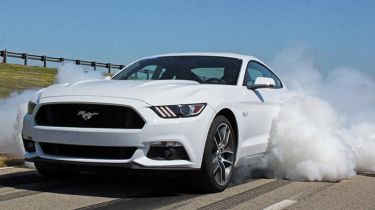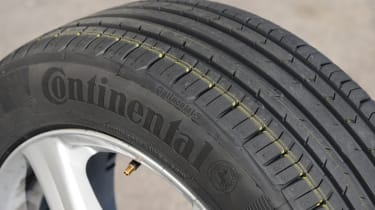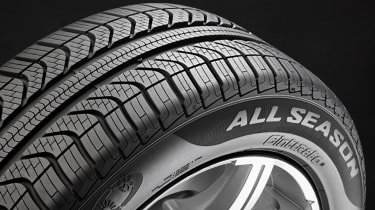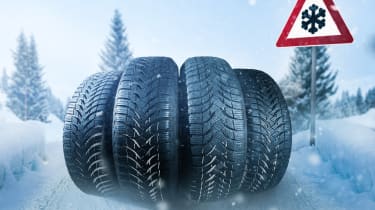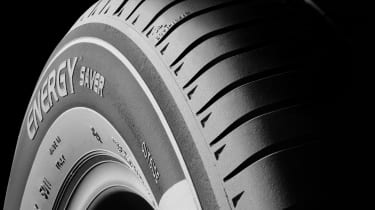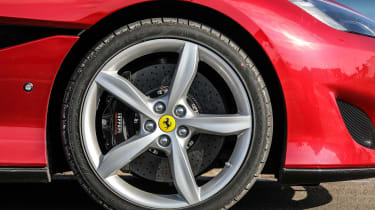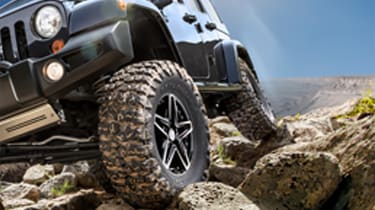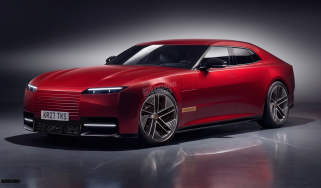Tyre types explained: what are the different types of tyre for?
All you need to know about the many different types of car tyre you can buy today, from all-season to run-flats and beyond...
If you’ve ever wanted to know a bit more about those black rubbery things that keep your car stuck to the road, then you’ve come to the right place. Our guide to the wide variety of tyre types available for cars, including tyres for 4x4s, performance tyres and seasonal tyres, should help to ensure you’ve got all the options covered when you’re looking for new rubber.
Many drivers will never think to deviate from the type of tyre their car arrived with, and when the tread wears thin will simply order like-for-like replacements. Other drivers are adventurous enough to shop around for similar tyres made by their favourite brands, or cheaper tyres at more attractive prices, but few drivers contemplate completely changing the type of tyres fitted on their vehicle.
Reasons for wanting to change your car’s tyre type include switching from standard to winter tyres when it’s colder, wanting to save fuel with energy-saving tyres, improving high-speed handling with performance tyres, or going for the added convenience and safety of run-flat tyres. Drivers of 4x4s and SUVs may also consider changing rubber to suit their vehicle’s primary use.
We’ve listed all the major tyre types below, with an explanation of the basics in each category. If you’re interested in any specific tyre type, then detailed technical information is available from manufacturer websites which you can use to research the best tyre brands and best tyres to suit your driving style, road conditions or your pocket.
We also carry out regular in-depth tyre tests of winter tyres, all-season tyres and summer tyres that will give you the information you need to pinpoint the best tyres in each category. We assess all the tyres back-to-back in controlled conditions to determine the differences between the top brands.
Tyre types explained:
Summer tyres
The chances are that, as a UK motorist, your car is currently running on summer tyres - despite what you may think about the British weather. This type of tyre is fitted as standard by the majority of car manufacturers so your new car will probably come fresh from the showroom with summer tyres and cars tend to stay on them because many owners simply replace their tyres like-for-like when the time comes.
Summer tyres are designed to work best above 7 degrees Celsius, and at such temperatures have slightly improved braking distances compared to all-season tyres or winter tyres. They are also designed to work well on wet and dry roads in warm temperatures.
Summer tyres are the dominant choice of car tyre in the UK but when conditions shift to become cold, wet or icy - as they have a tendency to do in this country - the performance of these tyres can decline markedly. Michelin reckons that stopping distances in snow are doubled if you’re comparing summer to winter tyres.
All-season tyres
All-season tyres are a relatively new phenomenon, filling the performance gap between summer tyres and winter tyres. Figures from Continental suggest that all-season tyres currently account for around 4% of the UK tyre market, or 5% if you include vans.
All-season tyres are designed to cope with all weather conditions and temperatures that our climate can produce year-round. They offer a good compromise given the fluctuating conditions that the UK climate has a habit of throwing up but they are neither as good in warm, dry conditions as summer tyres nor as effective in the cold as winter tyres.
All-season tyres are designed to be safe at a range of temperatures from -10 degrees to 30 degrees Celsius, whereas winter and summer tyres are optimised to perform better at either end of the temperature spectrum. All-season tyres do tend to be pretty good at dispersing surface water though, as rain-soaked roads are a hazard in the UK at any time of year.
All-season tyres do lose out to winter tyres on braking distance in low temperatures, and may grip less effectively during cornering too. They also offer less ultimate grip on warm tarmac than summer tyres, and that’s why some drivers prefer not to rely on an all-season solution. All-season tyres are usually recognisable by the M and S markings (for mud and snow), while some even have ‘All Season’ embossed on the sidewall.
Winter tyres
As mentioned above, winter tyres are specially formulated and designed to cope best in cold and icy conditions. That means they are made of a rubber compound that’s more effective at low temperatures - specifically beneath 7 degrees Celsius. They also have tread patterns designed to grip snow and clear surface water more effectively than all-season rubber.
Just by looking at a winter tyre you’ll notice there are thin grooves cut into the tread that are designed to bite into the snow for better grip. There are also wider channels in the chunkier tread blocks to help disperse water and clear slush. The winter tyre is actually designed to collect snow in these wider channels because snow on snow can bring better traction than the rubber itself. The rubber compounds used for winter tyres contain more natural rubber than standard because it hardens less at low temperatures to maintain good performance.
The downside of the specialised tread pattern used for winter tyres is that they tend to be noisier than summer tyres. They will also wear more quickly in warmer temperatures so they aren't really an option for year-round use in the UK. There are obvious safety advantages to fitting winter tyres in cold weather and it's common practice in many European countries but the cost of doing so together with the relatively mild climate in the UK means it's far less common here. If you do decide to fit winter tyres, you'll certainly be glad that you did when the snow and ice do come.
Energy-saving tyres
When driving, your car’s engine or electric motor has to overcome what is commonly referred to as the ‘rolling resistance’ of your tyres against the tarmac. In efficiency terms, the lower the rolling resistance the better, because it can dramatically affect fuel consumption.
Tyre companies have addressed this by producing tyres designated as ‘energy savers’, which typically provide less dynamic capability than ‘ordinary’ tyres in terms of braking distances and grip in cornering, particularly in the wet, but can make noticeable differences to your fuel economy.
Energy-saving tyres are often fitted as original equipment to economy focused hybrid or electric cars, because they help car makers meet efficiency targets which have often been vital for tax breaks in various markets - including here in the UK
Low-profile tyres and high-performance tyres
Sports cars and performance cars use tyres which are designed and constructed to make maximum use of the car’s potential. Typically that means they are wider than usual to provide the biggest possible contact patch with the tarmac, which can maximise grip during acceleration, braking and cornering in dry conditions. Performance tyres also tend to have a low profile sidewall, which means the depth of the tyre is relatively small compared to the width.
Low profile tyres usually run on larger than standard diameter alloy wheels, and the compact sidewall is designed to improve stability in the tyre when subjected to the extreme forces a powerful car can generate - again during braking, cornering and acceleration. High-performance tyres are constructed to withstand running at high speeds for long periods, and they have rubber compounds specially formulated to provide maximum grip. Their high-spec compared to normal tyres means they’re usually more expensive, and they’re typically less durable too.
Beyond the more road-focused high performance tyres there are tyres intended primarily for track use. These have increasingly minimal tread patterns as you head through semi-slick tyres towards completely slick tyres that are illegal for road use.
Run-flat tyres
Runflats are tyres designed with a reinforced sidewall structure which will support the weight of your car even when the air pressure drops due to a puncture. They are considered a safety benefit because a standard tyre can often disintegrate dangerously following a high-speed puncture, whereas a run-flat tyre will retain its structural integrity allowing the car to slow safely. Typically, you will also be able to drive on a deflated run-flat tyre at limited speeds of under 50mph, and for a distance of up to 50 miles. If that gets you to the garage you’ll never have to worry about roadside tyre changes again.
Run-flats are fitted as standard by a few car manufacturers - most notably BMW. In theory you can switch your car to run-flat tyres but keep in mind that cars fitted with these tyres have specially tuned suspension systems to cope with the stiffer side walls. The way your car rides and handles could be affected if you make the change. You will also need a Tyre Pressure Monitoring System (TPMS) to prevent you running unwittingly on a punctured tyre for longer or at higher speeds than are safe.
It's much easier and more advisable to switch from run-flat tyres to normal tyres. Some drivers choose to do this as the cost of run-flat tyres is generally higher. The more rigid nature of run-flat tyre sidewalls means they can reduce ride comfort noticeably too. Just be warned that cars fitted with run-flat tyres as standard may not have anywhere to store a spare wheel so you may be forced to carry a spare or a repair kit in the boot.
Another tyre type that is becoming more popular as a potential alternative to run-flat tyres is a seal tyre like ContiSeal. This features a sticky viscous sealant layer inside the tyre that's able to seal punctures up to 5mm in diameter, and thus prevent a potentially catastrophic deflation in the first place. VW have used these on the VW Passat for years and it is becoming more and more popular with other vehicle marques too.
Off-road tyres and 4x4 tyres
These days the fashion for crossover-style SUVs and 4x4s for road use means very many are equipped with exactly the same sort of tyre you’d find on a family hatchback or performance car. However, for the small number of SUVs that do venture off tarmac, it’s critical that the correct type of tyre is fitted - or you may not get very far.
Here in the UK there are two main categories of off-road tyres, known respectively as All-Terrain tyres or Mud tyres. All-Terrain tyres are designed to be used primarily on tarmac but with the capability to grip on muddy tracks and other loose surfaces, while mud tyres reverse the thinking.
Basically, if your SUV spends 80 per cent of its life on tarmac, then All-Terrain tyres are best for you. If it spends 80 per cent of its life off-road, then mud tyres are all-but essential.
You can tell the two apart at a glance because All-Terrain tyres have a relatively normal but chunky tread pattern allowing for decent grip and performance on and off road. Mud tyres have a much more aggressive tread pattern, with much bigger gaps between the tread blocks. That’s great for finding grip over sticky mud, rock or gravel, but significantly reduces the rubber contact patch when you’re driving on tarmac, which means you’ll get a lot less grip.
Now you know all about the different tyre types, find out how to change a tyre here...
Find a car with the experts

